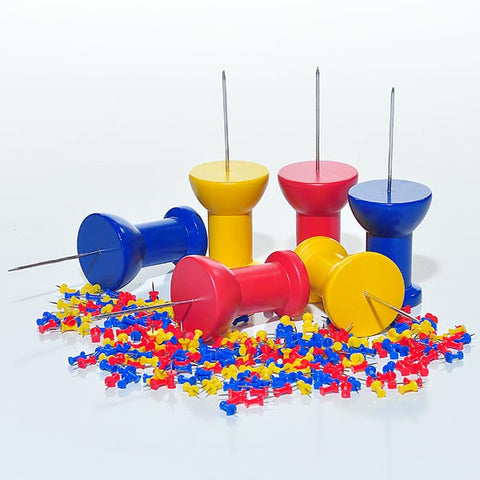
Pins have small round glass heads that are easy to work around also, because the pins are comparatively short, they are less likely to "stick out" when holding small pieces of fabric against a larger one. The most common type of sewing pin, they are used for light- to medium-weight fabrics and may have either a small flat head or a round plastic one.Ĭonsidered "extra fine", they are used for pinning pleats and lightweight fabrics. These pins have a head bent into a capital letter "T" to make it easier to grab with the finger tips. He sold the rights to his invention to pay a debt to a friend, not knowing that he could have made millions of dollars.Ī wider-than-usual-head allows this pin to hold beads more easily.

Walter Hunt invented the safety pin by forming an eight-inch brass pin into a bent pin with a spring and guard. John Ireland Howe invented a pin-making machine in 1832, and an improved machine in 1841 his Howe Manufacturing Company of Derby, Connecticut, used three machines to produce 72,000 pins per day in 1839. Henri-Louis Duhamel du Monceau, Art de l'épinglierĪdam Smith described the manufacture of pins as part of his discussion about the division of labor in the Wealth of Nations. There is nobody who is not surprised of the small price of pins but we shall be even more surprised, when we know how many different operations, most of them very delicate, are mandatory to make a good pin. Production Ī pinners guild was first established in London in 1356, spreading to other towns, but falling short of the quality produced by French pinmakers, discussed in the Art de l'épinglier ( French: Art de l'épinglier, lit.'Pin art') (1761) where Henri-Louis Duhamel du Monceau gives details about the division of labor used by French pinmakers: Note, however, that some modern specialty pins are made out of rust-proof and very strong titanium. However, this took many months or even years to happen, and as nickel plated steel pins were usually used only temporarily to hold fabric in place prior to sewing, no further refinement has been considered necessary. Nickel did not rust, but tended to flake off the steel in humid weather, again allowing it to rust. The development of inexpensive electroplating techniques allowed the steel to be plated with nickel. This development was followed by the use of steel which was much stronger but tended to rust when exposed to humid air. Many later pins were made of brass, a relatively hard and ductile metal that became available during the Bronze Age. Later, pins were also used to hold pages of books together by threading the needle through their top corner. Originally, these were fashioned out of iron and bone by the Sumerians and were used to hold clothes together. Archaeological evidence suggests that curved sewing pins have been used for over four thousand years. The development of the pin closely paralleled that of its perforated counterpart, the needle. Metal pins dating to the Bronze Age have been found in Asia, North Africa and Europe, like the notable hammer-headed pins from the Kurgan burials in the northeastern Caucasus. Neolithic sites are rich in wooden pins, and are still common through Elizabethan times. Pins have been found at archaeological sites dating as early as the Paleolithic, made of bone and thorn, and at Neolithic, Celtic and Ancient Roman sites.

steel, copper, or brass), wood, or plastic.īone and metal pins used to fasten clothing in the Bronze Age According to their function, pins can be made of metals (e.g. the bobby pin), or two strips of a rigid material bound together by a spring at one end so that, when the spring held open, one can insert some material between the prongs at the other end that, the spring allowed to close, then clamp the inserted material. a wire) whose length has been folded into parallel prongs in such fashion that the middle length of each curves towards the other so that, when anything is inserted between them, they act as a clamp (e.g. A pin is a device used for fastening objects or fabrics together and can have three sorts of body: a shaft of a rigid inflexible material meant to be inserted in a slot, groove, or hole (as with pivots, hinges, and jigs) a shaft connected to a head and ending in a sharp tip meant to pierce one or more pieces of soft materials like cloth or paper (the straight or push pin) a single strip of a rigid but flexible material (e.g.


 0 kommentar(er)
0 kommentar(er)
